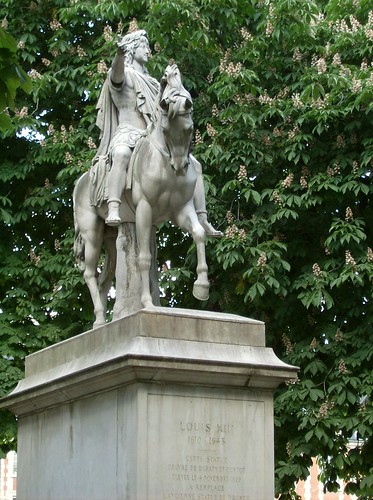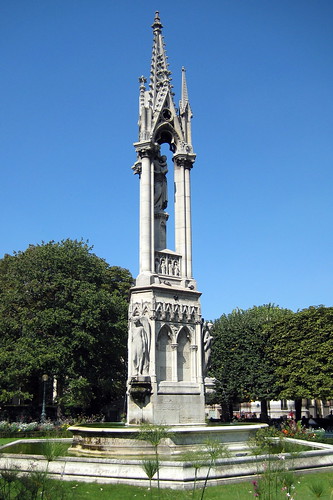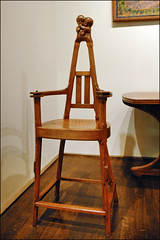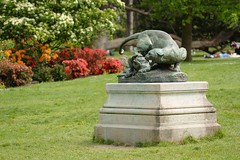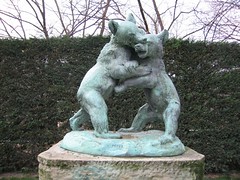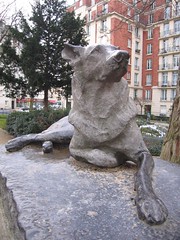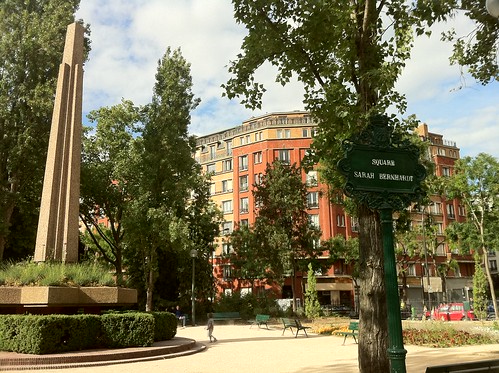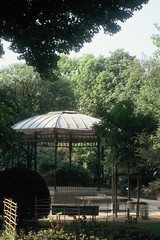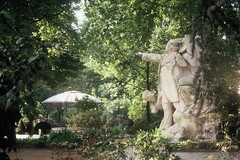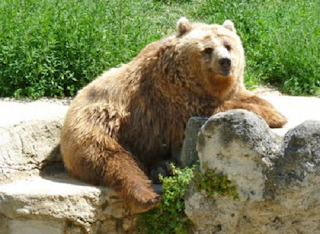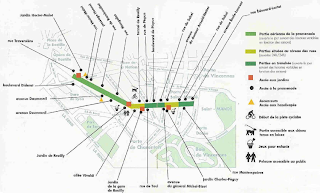History and description of the Parc de la Villette
The idea of a Park on the site of the former general abattoirs of Paris, came little by little after the destruction of the place in 1974.
In 1983, a French architect, Bernard Tschumi became responsible for the architectural conception, after an international competition for the architectural design of the park started in 1982.
Today the Paris park combines nature and architecture, recreation areas, places of exhibitions, performances and debates...with inside "la Cité des Sciences et de l'Industrie", "la Maison de la Villette", "la Géode", "Zénith de Paris", "l'Argonaute"...on an area of 55 hectares (33 ha of green spaces).
The park houses 12 theme gardens:
*Les jardins passagers: the gardens are ecological gardens for educational, pedagogical and social purposes.They germinated in 2001.
*Le jardin des bambous- the garden of bamboos houses the second largest collection in France of species of bamboo. The garden is located six feet below the rest of the park, a mixing of black and white pebbles between bamboo stems dark or light embellish the garden. At the entrance of the garden, you will find a huge vertical concrete cylinder whose walls will return a strange electronic music.
*Le jardin des frayeurs enfantines- the garden of childhood fears: this forest of spruce blue and birch trees, bathed in a strange music, evokes fairy tales.
*Le jardin de la treille: There are 90 fountains which slide down eight terraces. There are also 7 bronze sculptures that overlooks the whole.
*Le jardin des équilibres- the garden of balance: Large kites metal are placed, like giant birds, among the vegetation with two bridges overlooking the unusual landscape.
*Le jardin des îles- the garden of islands: Visitors have to go through the "Canal de l'Ourcq" to reach the garden, the area is dotted with small wooded hills with cobbled alleys of black and white marble.
*Le jardin des miroirs- the garden of mirrors: 28 monoliths of more than 2 meters , covered with a polished stainless steel plate forming some mirrors, among scots pine and maple trees.
*Le Jardin des dunes et des vents- the Garden of dunes and winds: Games that develop both balance and motor skills of children: pedal wind, sails moving walls, boat hulls and waves of air cushions.
*Le jardin des voltiges- the garden of acrobatics :Space dedicated to games and gear (climbing ropes). Established in altitude, it has two domes which allow two people separated by several meters to converse (with a low voice).
*Le jardin du dragon- the garden of dragoon: It's a giant installation of 80m whose tongue forms a giant slide.
*Le jardin des ombres-the garden of shadows is remarkable for its mineral soil with pieces of white marble.
*Le jardin des dessins is located on the middle of the Paris park. Created at the initiative of Sidaction (AIDS organisation), it's an area of awareness and prevention. There are 16 000 ceramic tiles, which are the support of 10,000 drawings.
Location of the Paris park
The Park de la Villette is located on the
19th arrondissement of Paris.
How to get to the of the Parc de la Villette?
-To visit the Parc de la Villette you can go by the Paris metro line,
line 5, Porte de Pantin station.
You can use also the
Paris metro line 7- Porte de la Villette station
-You can use the Paris bus line
*Porte de Pantin (Grande Halle)
*Porte de la Villette (Cité des Sciences)
-By boat also
Entrance fee and opening hours
The Paris park de la Villette is open all day long, however according the internal rules it's forbidden to enter the Park between 1-6am.
Some garden also have special opening hours.
Parc de la Villette map
